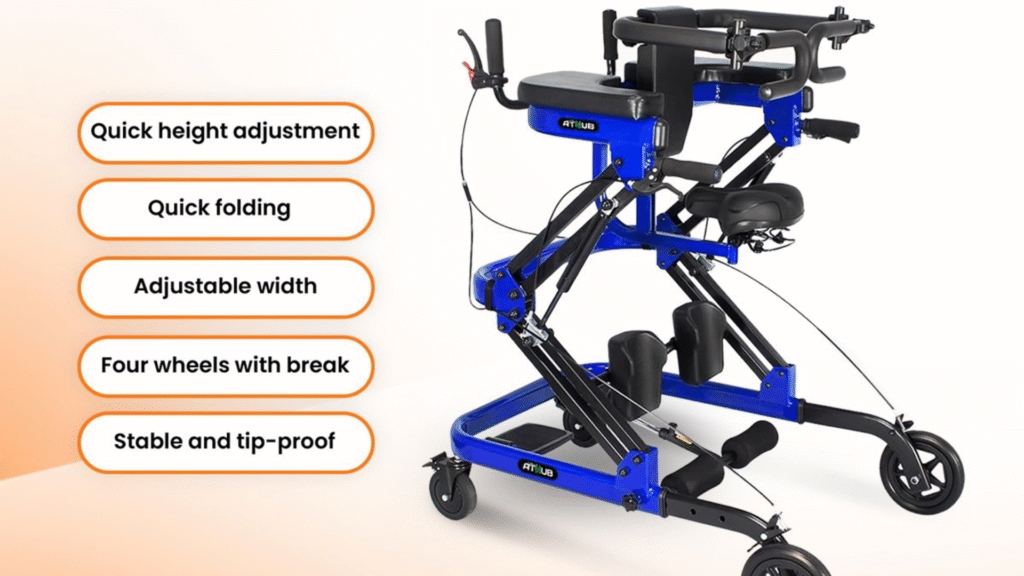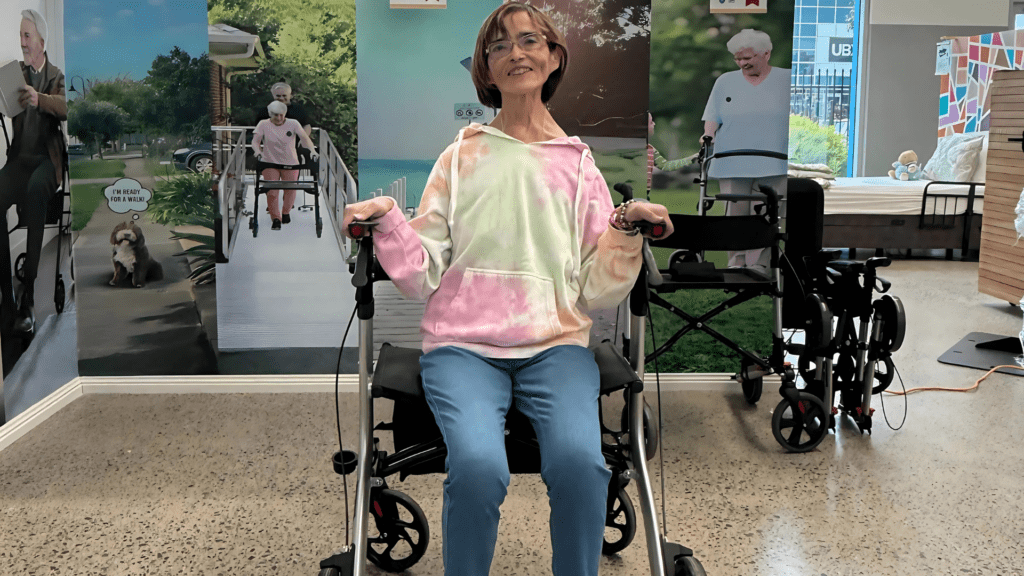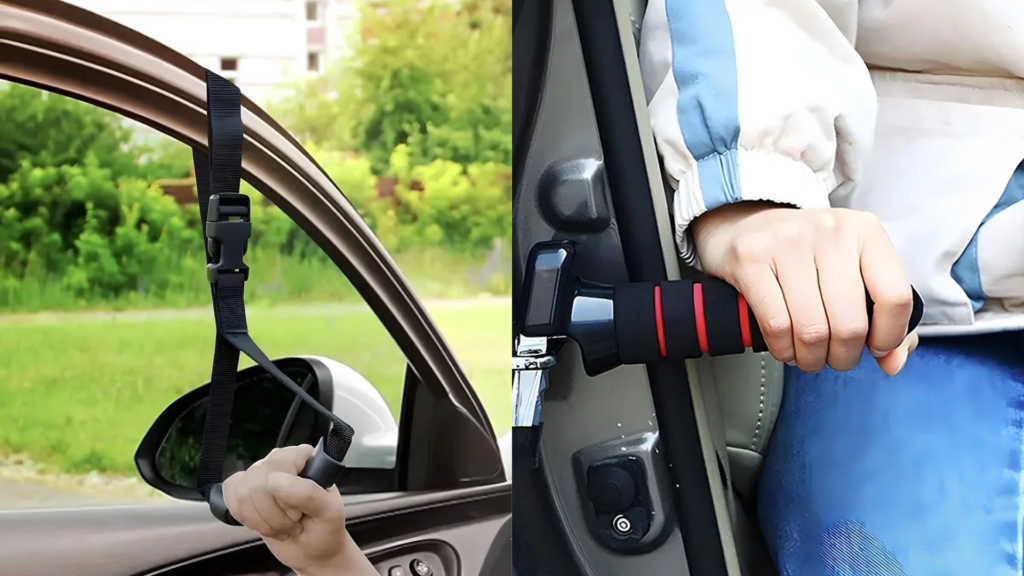Recovering from a stroke or major surgery often involves relearning how to walk. During this phase, the use of a gait trainer can play a crucial role in helping patients restore mobility, balance, and confidence. These specially designed walking aids provide stability, posture support, and adjustable features that make rehabilitation safer and more effective.
For individuals in Victoria, NDIS and SWEP funding pathways are also available to support gait trainer purchases or rentals, making recovery more accessible at home or in therapy.
Why Gait Support Is Crucial for Recovery
After a neurological event such as a stroke or physical trauma like joint replacement surgery, walking unaided can feel daunting or even unsafe. Key challenges during recovery include:
- Poor coordination or muscle control
- Fatigue and reduced endurance
- Weakness in the lower limbs
- Unsteady balance and increased fall risk
A mobility gait trainer provides forward support while promoting natural step patterns. With adjustable posture controls and wheeled movement, it allows patients to regain movement without compromising safety.
Gait trainers are particularly helpful during the early and middle stages of recovery, where patients need partial weight-bearing support and ongoing supervision by physiotherapists or carers.
To explore available models, visit the Gait Trainer category page.
Key Benefits of Using a Gait Trainer
Whether you’re recovering at home or in a rehabilitation centre, gait trainers offer several benefits:
- Stability during ambulation for individuals with unsteady gait or hemiparesis
- Improved posture and step alignment through upper body positioning aids
- Partial weight-bearing assistance to reduce stress on weak limbs
- Enhanced confidence and reduced fear of falling
- Therapist-guided progress tracking, particularly during physiotherapy sessions
Unlike standard walkers or rollators, a gait trainer is tailored for neurological and post-surgical recovery, making it more effective for building endurance and muscle memory.
Explore our in-stock Gait Trainer Walker model designed for both clinical and home-based recovery.
Choosing the Right Trainer for Stroke or Surgery
Selecting the right gait trainer depends on the patient’s current mobility level, therapy goals, and environment. Key considerations include:
- Height adjustability: ensures ergonomic support for users of different statures
- Anterior vs posterior support: anterior (front-facing) support is ideal for early rehab stages, while posterior frames suit more independent users
- Seat or pelvic support options: useful for patients with fatigue or partial mobility
- Ease of transport and storage: folding models or detachable frames work well for home users
- Wheel locking and directional controls: help regulate pace and prevent backsliding
A physiotherapist or occupational therapist can help determine which features are essential based on the user’s stage of recovery and home layout. For assistance in choosing, see our store overview for related rehab aids.
Renting or Buying: What to Consider
For short-term rehabilitation or trial periods, gait trainer hire is often a practical option. Renting:
- Minimises upfront cost
- Allows testing of suitability
- Works well for temporary post-op recovery
However, long-term stroke rehab or progressive conditions may require purchase to ensure consistency and fit. When comparing rental vs purchase, also consider:
- Frequency and intensity of use
- Availability of funding (see NDIS/SWEP below)
- Adjustability features for evolving needs
You can get started by submitting a form through our product enquiry page.
NDIS and SWEP Support in Victoria
Victorian residents recovering from surgery or living with a disability may be eligible for funding support through:
- NDIS (National Disability Insurance Scheme): provides assistive technology funding under core or capital supports for participants with mobility-related goals
- SWEP (Statewide Equipment Program): supports individuals with long-term functional impairments who meet eligibility criteria
To apply, you’ll typically need:
- An occupational therapist or physiotherapist assessment
- Clinical justification of the need for a gait trainer
- A quote from a registered provider like CareWithUs
Both funding options aim to improve mobility and independence, and they can cover either purchase or hire, depending on the case. In most instances, therapy teams collaborate with suppliers to complete trial, sizing, and quotation steps smoothly.
FAQs: Gait Trainers for Rehab and Stroke Recovery
Q1. What is the difference between a walker and a gait trainer?
A: A walker provides general support for walking, while a gait trainer is designed specifically for rehabilitation. It offers posture control, directional guidance, and extra support for people with neurological or muscular conditions.
Q2. Who can benefit from a gait trainer after a stroke?
A: Stroke survivors with limited balance, hemiparesis, or poor coordination often benefit most. It helps retrain walking patterns in a controlled and safe manner.
Q3. Can I rent a gait trainer instead of buying one?
A: Yes. Rental is ideal for temporary recovery needs or for trialling equipment before purchase. CareWithUs offers both rental and purchase options depending on user requirements.
Q4. Is a gait trainer covered by the NDIS?
A: Yes, provided it is considered reasonable and necessary. An allied health professional must assess and justify the equipment in the participant’s NDIS plan.
Q5. How do I know which gait trainer is right for me?
A: It’s best to consult a physiotherapist or occupational therapist. They can evaluate your strength, mobility level, and home environment to recommend the right features.



